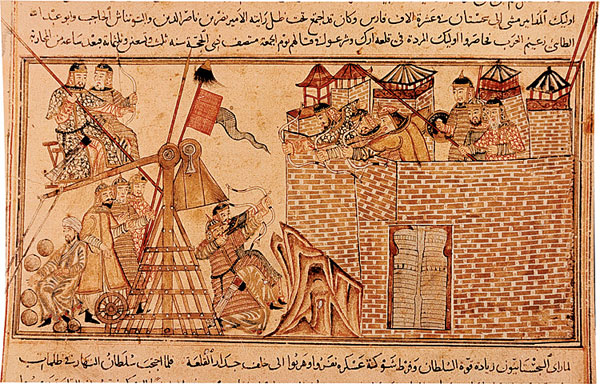
Source: MongolsBesiegingACityInTheMiddleEast13thCentury, Wikimedia

Source: MongolsBesiegingACityInTheMiddleEast13thCentury, Wikimedia
The Mongols often destroyed the towns they attacked, usually as a by-product of battle, sometimes deliberately after conquest. Mongols traditionally had no use for towns because they were nomads. Destroying them was a practical measure to prevent their use for resistance. Irrigation channels, without which agriculture in regions with fragile ecosystems was impossible, were in many areas seriously damaged or neglected. Gradually they silted up and became unusable, with serious long-term ecological consequences that resulted in a set-back for agriculture over wide areas for centuries. This problem was especially acute [severe] in Persia and Iraq.
Destruction was a by-product of the Mongols' conquests, rather than policy. They were unaware of or uninterested in the damage, while the local population, reduced by flight, massacre, famine, disease, could not spare the labor to restore and maintain the irrigation channels.